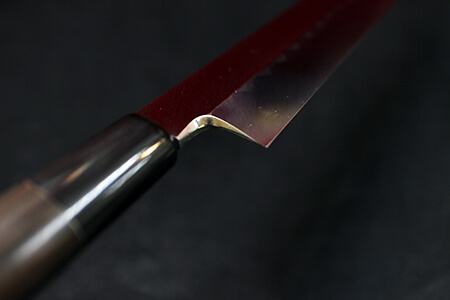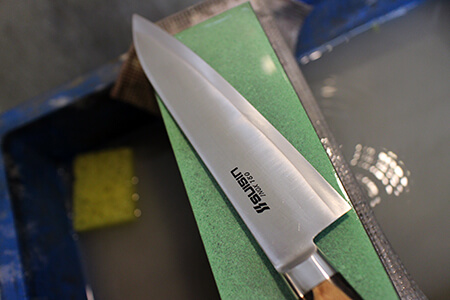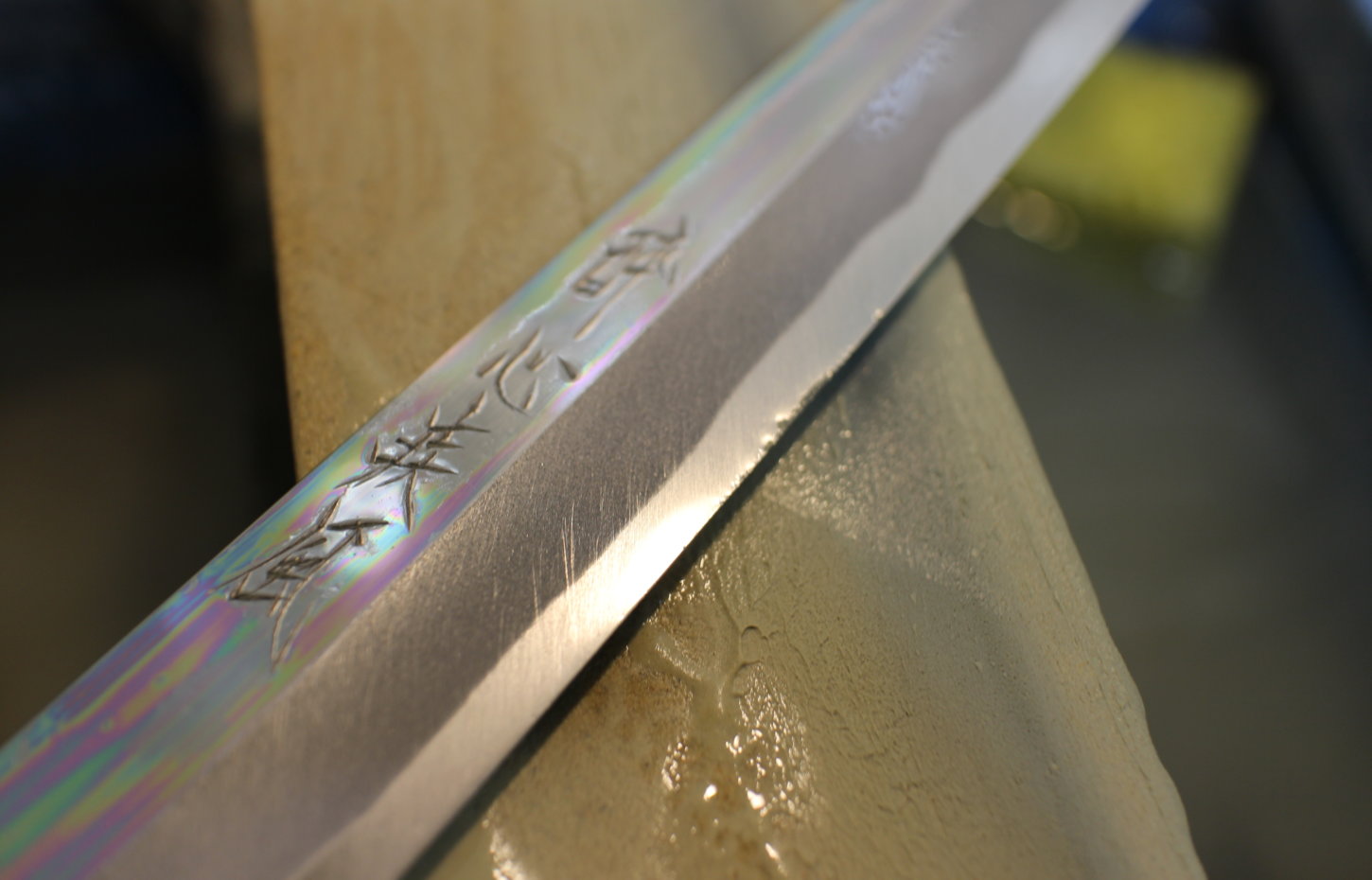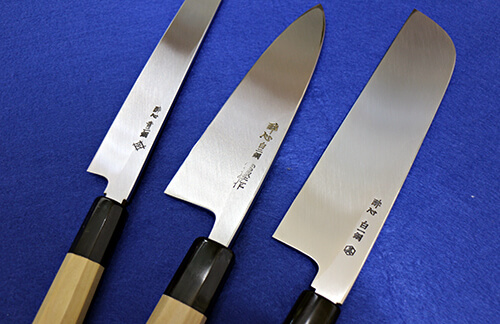After Use!

In the knife care instructions, it says, ‘After use, wash well with a neutral detergent and wipe off the moisture with a dry cloth.’ But what exactly does ‘after use’ mean? I believe it refers to after finishing the cutting tasks, not after all cooking is complete or after the meal is over. In professional kitchens, it’s common to wipe off food juices and scraps with a cloth during work. Although they can’t wash knives with detergent during busy hours, it’s fine since they’re constantly in use throughout service hours. However, for home use, whether it’s for daily meals or as a hobby, I recommend washing the knife with detergent or at least thoroughly wiping it off with a cloth right after cutting tasks are done.
Stainless steel knives can withstand some neglect, as their name suggests, but if you’re using high-carbon stainless steel like those found in professional kitchens, even stainless steel can rust under poor care. I’ve seen professional chefs mishandle even INOX or Ginsan steel, leading to rusty blades. Especially around the joint between the knife and the handle, food residue often collects and becomes a mess. It makes me wonder what would happen with a carbon steel knife!
The main causes of rust are food juices (which can cause discoloration from tannins) and food scraps (which can cause rust on the edge). Even fish scales or fibrous food scraps can impact the blade enough to cause rust, particularly with carbon steel knives.
Why do I mention this? Recently, I’ve been getting knives for repair from home use that show signs of rust and neglect. There are clear signs that they were left uncleaned after cutting. ‘Is this a ring from a leek?’ I’ve even thought it looked like an octopus sucker at times, haha. ‘Are these the remains from slicing sashimi?’ Such things are not uncommon to see.
I know there are people reading this blog who use knives as a hobby or have gifted knives to their spouses and manage their care themselves. After cutting tasks, wash your knife! Or, at the very least, wipe it down with a tightly wrung cloth. ‘After use’ does not mean after all the cooking is done. Just this simple habit can greatly extend the life of a knife.
Even as part of my job, there were times when I worked hard to remove rust, only to feel frustrated because some rust marks remained. That’s what I was reminded of today.
- 2014-10-01





